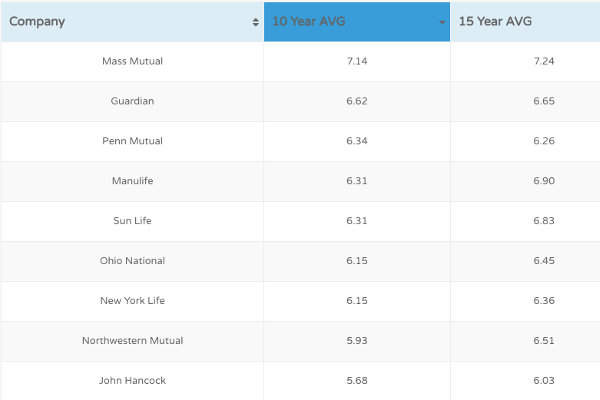When exploring the financial landscape of insurance products, one often encounters the term "whole life insurance." This type of permanent life insurance offers unique benefits, but understanding the cost of whole life insurance can be complex. In this post, we will delve deep into the essential insights surrounding the costs associated with whole life insurance, ensuring that you are not only informed but empowered in your decision-making process.
Moreover, the premiums you pay contribute to the cash value of your policy, which grows over time. This growth is usually guaranteed and can be accessed through loans or withdrawals, providing a financial cushion when needed. Understanding how your premiums are allocated can help you appreciate their role in your overall financial strategy.
In essence, a portion of your premium payments goes toward building this cash value, which can be seen as a forced savings plan. Over time, this accumulation can become a valuable asset, providing you with financial flexibility. It's crucial to understand how different policies accumulate cash value and how this may impact the overall cost of your insurance.
Whole life policies often include a guaranteed death benefit, which means that you can have peace of mind knowing that your loved ones will receive a specific amount regardless of market fluctuations. However, it is important to note that the higher the death benefit, the higher the premium will generally be. Assessing the right amount of coverage for your needs is vital to managing the cost effectively.
While dividends are not guaranteed, reputable whole life insurance companies have a history of paying them consistently. This can provide an additional layer of financial benefit, effectively lowering the net cost of your policy over time. It's crucial to research and choose a company with a strong dividend history to maximize this benefit.
Using tools like advanced algorithms can simplify this comparison process. At Top Whole Life, we provide a platform that allows you to compare quotes from multiple A+ rated companies, giving you the ability to make an informed decision quickly. This step is crucial, as it ensures that you are not only getting the best coverage but also the most competitive pricing.
For instance, if you decide to withdraw cash value from your policy, it may reduce the death benefit and could incur surrender charges if done within a specific time frame. Being aware of these hidden costs enables you to make better financial decisions regarding your whole life insurance policy, ensuring that you can maximize its benefits while minimizing unexpected expenses.
Whole life insurance is more than just a safety net; it is a strategic financial tool. By understanding the costs involved, including premiums, cash value, death benefits, and potential dividends, you can appreciate the true value of whole life insurance as an integral part of your financial plan.
Whole life insurance offers a unique blend of protection, investment growth, and stability. At Top Whole Life, we are dedicated to helping you navigate this complex landscape and find the best policy that meets your needs. Explore our resources and get a free quote today to embark on your journey toward securing your family's financial future with whole life insurance.
- Understanding Whole Life Insurance Costs
- Premiums: The Backbone of Whole Life Insurance
Moreover, the premiums you pay contribute to the cash value of your policy, which grows over time. This growth is usually guaranteed and can be accessed through loans or withdrawals, providing a financial cushion when needed. Understanding how your premiums are allocated can help you appreciate their role in your overall financial strategy.
- Cash Value Accumulation: An Investment Component
In essence, a portion of your premium payments goes toward building this cash value, which can be seen as a forced savings plan. Over time, this accumulation can become a valuable asset, providing you with financial flexibility. It's crucial to understand how different policies accumulate cash value and how this may impact the overall cost of your insurance.
- Death Benefit: The Ultimate Payout
Whole life policies often include a guaranteed death benefit, which means that you can have peace of mind knowing that your loved ones will receive a specific amount regardless of market fluctuations. However, it is important to note that the higher the death benefit, the higher the premium will generally be. Assessing the right amount of coverage for your needs is vital to managing the cost effectively.
- Dividends: A Potential Return on Investment
While dividends are not guaranteed, reputable whole life insurance companies have a history of paying them consistently. This can provide an additional layer of financial benefit, effectively lowering the net cost of your policy over time. It's crucial to research and choose a company with a strong dividend history to maximize this benefit.
- Comparing Whole Life Insurance Policies
Using tools like advanced algorithms can simplify this comparison process. At Top Whole Life, we provide a platform that allows you to compare quotes from multiple A+ rated companies, giving you the ability to make an informed decision quickly. This step is crucial, as it ensures that you are not only getting the best coverage but also the most competitive pricing.
The Real Cost of Whole Life Insurance: 8 Essential Insights!
Click below to get a Quote Now!
Get Me A Quote- Hidden Costs to Be Aware Of
For instance, if you decide to withdraw cash value from your policy, it may reduce the death benefit and could incur surrender charges if done within a specific time frame. Being aware of these hidden costs enables you to make better financial decisions regarding your whole life insurance policy, ensuring that you can maximize its benefits while minimizing unexpected expenses.
- The Long-Term Perspective
Whole life insurance is more than just a safety net; it is a strategic financial tool. By understanding the costs involved, including premiums, cash value, death benefits, and potential dividends, you can appreciate the true value of whole life insurance as an integral part of your financial plan.
Conclusion
In conclusion, the cost of whole life insurance encompasses more than just premiums; it represents a multifaceted investment in your financial future. By understanding the various components, including cash value accumulation, death benefits, and potential dividends, you can make an informed decision about whether whole life insurance aligns with your financial goals.Whole life insurance offers a unique blend of protection, investment growth, and stability. At Top Whole Life, we are dedicated to helping you navigate this complex landscape and find the best policy that meets your needs. Explore our resources and get a free quote today to embark on your journey toward securing your family's financial future with whole life insurance.




